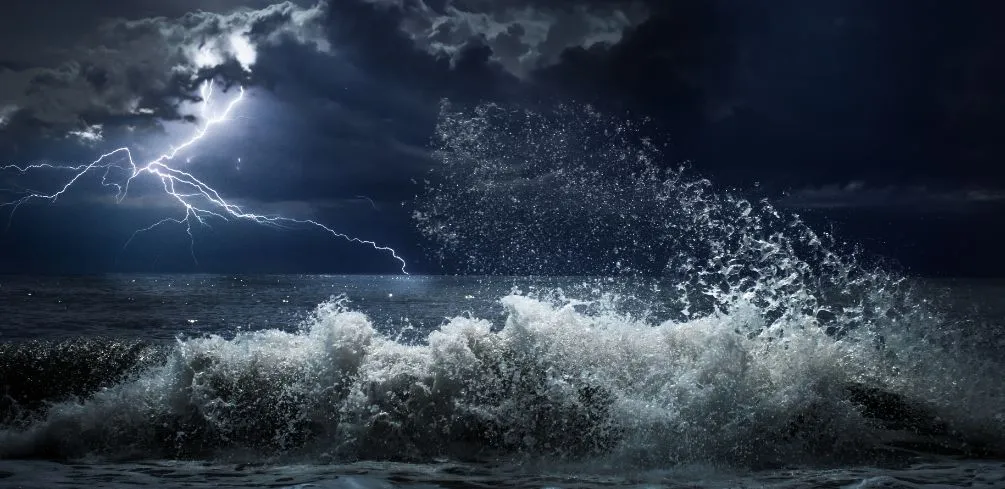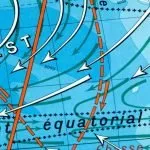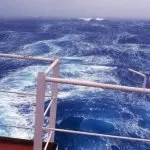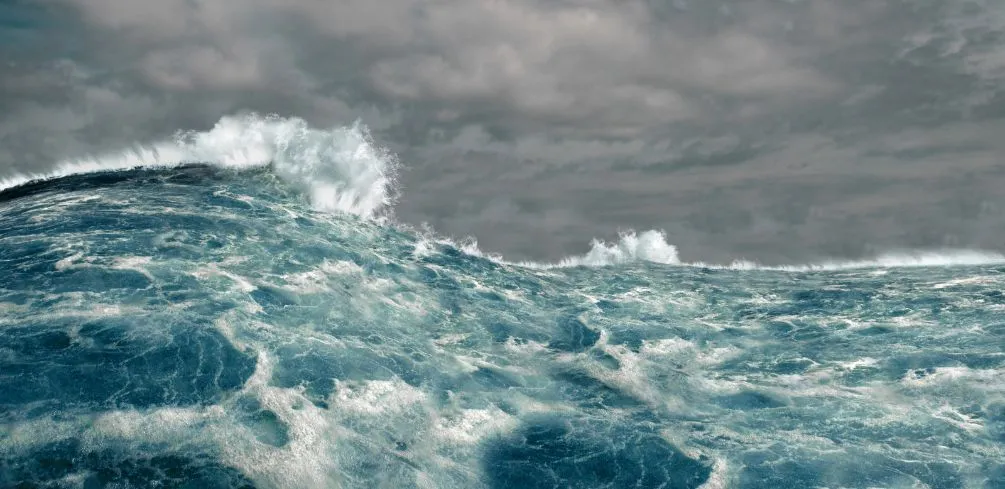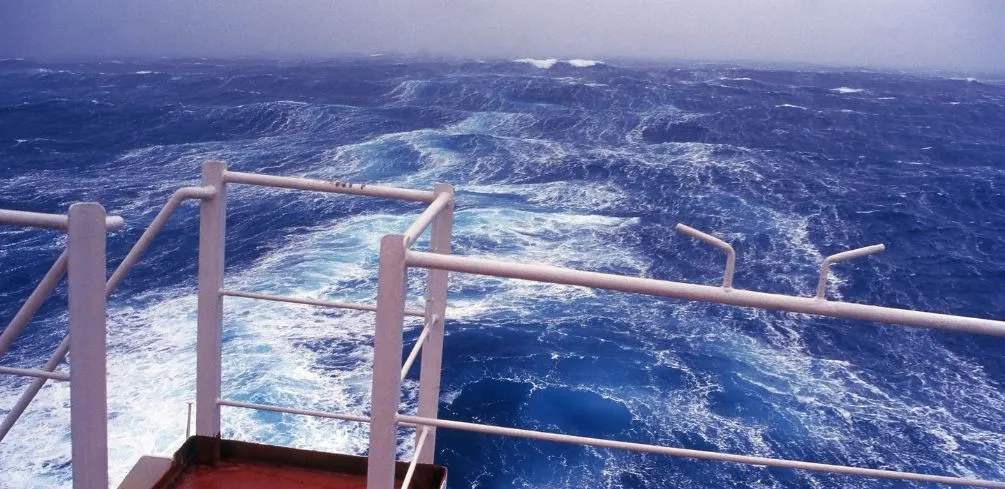Have you ever wondered what it would be like to experience a storm at sea? Imagine the intense power of the raging winds and waves that threaten to break through your ship’s hull.
This is what many sailors have experienced throughout history during ocean storms, and their stories are truly awe-inspiring. In this article, we’ll be exploring historical ocean storms and their impact, so keep reading if you’d like to learn more!
Throughout human history, we’ve seen some of the worst ocean storms imaginable. From the Great Storm of 1703 off the coast of England all the way to Hurricane Katrina in 2005, these storms have caused massive destruction across thousands of miles.
We can only imagine how terrifying these experiences must have been for those involved! But through understanding these powerful events, we can also gain insight into how they shape our world today.
Finally, by examining these historical ocean storms in greater detail, we can gain an appreciation for how they impacted not only people’s lives but also our planet as a whole. So let’s take a closer look at some of these incredible events and explore what lessons lie within them for us today.
Definition Of Ocean Storms
Ocean storms, also known as cyclones, are intense weather systems that form over the ocean. They are characterized by extremely strong winds and heavy rain or snowfall. These storms can produce devastating effects on coastal areas and offshore islands, including flooding, high waves, and storm surges. They can also cause damage to boats, buildings, and infrastructure.
The intensity of an ocean storm is determined by its severity. Storms are classified as weak, moderate, or severe based on their wind speed and the amount of precipitation they produce. Weak storms usually have winds of up to 39 miles per hour (mph).
Moderate storms have winds between 40 mph and 73 mph, while severe storms have wind speeds of 74 mph or higher. The more severe the storm is, the greater the potential for the destruction it carries with it.
Ocean weather plays a key role in determining the path and intensity of an ocean storm. Factors such as humidity levels in the atmosphere, sea surface temperatures, air pressure, and atmospheric winds all affect how a storm will move through an area. Knowing what to expect from an upcoming storm system helps people prepare for any potential disasters it might bring about.
With proper preparation and safety precautions in place, people can limit the impact of these powerful ocean storms on their lives.
Historical Examples Of Destructive Storms
It is true that ocean storms can be powerful and destructive, but how destructive are they? To answer this question, let’s take a look at some of the most destructive storms in history.
The first example is Hurricane Katrina which struck the Gulf Coast of the United States in 2005. Katrina caused billions of dollars in damage, making it one of the costliest hurricanes on record. It also caused an estimated 1,800 deaths and left many parts of New Orleans underwater due to storm surges.
The second example is Typhoon Yolanda which struck the Philippines in 2013. Yolanda was one of the strongest typhoons ever recorded, with sustained winds up to 195 mph. It caused over 6,300 fatalities and more than $2 billion in damage.
These examples demonstrate just how devastating ocean storms can be:
Financial Costs:
- Hurricane Katrina: Billions of dollars in damages
- Typhoon Yolanda: More than $2 billion in damages
Human Lives Lost:
- Hurricane Katrina: An estimated 1,800 deaths
- Typhoon Yolanda: Over 6,300 fatalities
These storms show what can happen when ocean storms reach shorelines and cause massive destruction through storm surges and high winds. Although it cannot be prevented or predicted when these types of disasters will occur, society should remain vigilant and prepared for any possible situation so that we may minimize their impact on our lives.
Causes Of Intense Storms
Intense storms can wreak havoc on coastal areas and cause massive destruction. Understanding the causes of these storms is essential in being able to properly prepare for them and reduce their impacts. Below we discuss some of the key factors that contribute to intense storm activity.
| Cause | Description | Impact |
|---|---|---|
| Ocean Currents | It can increase damage potential due to higher winds associated with storm activity. Can also affect pressure systems near coasts which can result in more powerful storm surges during landfalling events. | Can affect air temperatures at the surface, as well as wind speed and direction. |
| Climate Change | Climate change is caused by natural processes and human activities that result in changes to global temperatures and weather patterns. | Can lead to an increase in extreme weather events such as hurricanes, cyclones, tornadoes and other storms. |
| Wind Speed | Wind speed is a measure of how quickly air moves around the planet. It is measured in kilometers per hour (kph). Higher wind speeds can increase the intensity of storms, which can lead to more destructive outcomes. | It can increase damage potential due to higher winds associated with storm activity. It can also affect pressure systems near coasts which can result in more powerful storm surges during landfalling events. |
| Pressure Systems | Pressure systems refer to areas where there is either high or low atmospheric pressure relative to other areas on Earth’s surface. These pressure systems drive air movements which can cause storms when they interact with warm air masses over oceans or land masses. | This can lead to increased chances for strong storms if conditions are favorable for their development within a particular system (e.g., warm sea surface temperatures). It can also influence wind-speed-related damage potential when these systems interact with coasts during landfalling events. |
| Air Temperature | Air temperature refers to the average temperature of the air within a given region or area over time, typically measured in degrees Celsius (C). Higher air temperatures can lead to increased chances for tropical storm formation due to warmer ocean waters providing energy sources for these types of storms. Warm water provides the fuel that intensifies the strength of a tropical cyclone as it moves toward landmasses. | Air temperature refers to the average temperature of the air within a given region or area over time, typically measured in degrees Celsius (C). Higher air temperatures can lead to increased chances for tropical storm formation due to warmer ocean waters providing energy sources for these types of storms. Warm water provides the fuel that intensifies the strength of a tropical cyclone as it moves toward landmasses . |
In summary, ocean currents, climate change, wind speed, pressure systems, and air temperature all play an important role in determining how intense a storm will be when it reaches its destination point on land or sea surfaces near coasts across the world.
With an understanding of how each factor contributes, communities can better prepare themselves against the potential impacts of these powerful forces of nature.
Societal And Economic Impacts
It’s a sad state of affairs when the ocean storms caused by climate change have become the new normal. As these storms increase in intensity and frequency, human suffering and environmental damage are becoming greater than ever before. The social and economic impacts of these powerful ocean storms are staggering, leaving behind destruction and despair in their wake.
The economic consequences of these storms can be devastating. Businesses that rely on the ocean for their livelihoods can be wiped out in a single storm, with communities unable to recover from the losses. In addition to this, infrastructure along coastlines is often destroyed during intense storms, leading to high repair costs and long-term disruption to services such as electricity and water supplies.
The social effects of these storms can be equally devastating. People living near coastlines are often displaced due to extensive flooding or destruction of property, while those further inland may also suffer from extended power outages or contamination of water sources.
Furthermore, there is often an increased risk of disease outbreaks following a storm as sanitation systems become overwhelmed with floodwater or sewage backups.
These powerful ocean storms are having a huge impact on our world, causing untold suffering and destruction at both an individual and collective level. If we don’t take action now to address the causes of climate change, then we will continue to see more frequent and intense storms occurring in the future – something that nobody wants for our planet or for its people.
Prevention And Mitigation Strategies
When it comes to ocean storms and their effects, prevention and mitigation strategies are essential. We can’t completely prevent them, but we can do our best to be proactive in preparing for potential storms. To protect our communities from the dangers of historical ocean storms, there are a few things we can do.
First, we need to understand the potential effects of these storms on our coastal areas. This means researching historical ocean storms and how they impacted various regions. This knowledge will help us develop better preparedness plans for when a storm does occur.
Second, we need to have emergency plans in place before a storm strikes. These should include evacuation plans, emergency supplies, and communication protocols for staying informed about the storm’s progress. This can help ensure that people are safe during an ocean storm event.
Thirdly, we must make sure that buildings and other structures are properly constructed so that they can withstand high winds and flooding caused by an ocean storm. Building with materials designed for hurricane-force winds is one way to ensure that property damage is minimized during a storm event.
By taking steps now to prepare for possible future ocean storms, we can minimize the impact they have on our lives and reduce the risk of harm or loss of life due to these destructive forces of nature. With proper preparation and understanding of the risks associated with these weather events, we can create safer communities that are better equipped to handle whatever Mother Nature may bring our way in the future.
Frequently Asked Questions
What Is The Difference Between An Ocean Storm And A Hurricane?
When it comes to ocean storms and hurricanes, there is a common misconception that these two phenomena are one and the same. However, there are some distinct differences between them.
An ocean storm is a large-scale storm system that develops over the ocean, often bringing strong winds and rain. A hurricane is a type of tropical cyclone with sustained wind speeds of at least 74 mph (119 km/h).
There are several factors that differentiate an ocean storm from a hurricane, including storm intensity, storm surge, and wind speed. Ocean storms have lower wind speeds than hurricanes, usually between 39 to 73 mph (63 to 117 km/h).
Hurricanes can reach much higher wind speeds, ranging from 74 to more than 157 mph (119 to 253 km/h). Additionally, hurricanes tend to cause significantly more destruction due to their high intensity. Storm surge is also much higher with hurricanes compared to other types of storms.
It’s important to understand the differences between an ocean storm and a hurricane so that you can be prepared for the potential impacts they may have on your environment. While both events can bring heavy rains and strong winds, there are varying levels of destruction associated with each one depending on the intensity of the storm and the extent of the damage caused by its accompanying storm surge or wind speed.
Being aware of these differences will help you make informed decisions about how best to prepare for either situation in order to minimize potential damage or loss.
What Are Some Of The Most Extreme Ocean Storms In Recorded History?
We’ve all heard of hurricanes and the destruction they can cause. But what about ocean storms? What are they, and how do they differ from hurricanes? Well, ocean storms are powerful weather systems that form over oceans rather than land, and while some of them can reach hurricane-level intensity, others remain much milder.
In either case, these storms can have catastrophic consequences for coastal areas, leading to flooding and other forms of damage. Let’s take a look at some of the most extreme ocean storms in recorded history.
Deadly ocean storms have been around for centuries and have caused untold destruction throughout human history. One such example is the Great Galveston Hurricane of 1900 which struck the Texas coast with devastating force, killing more than 8,000 people.
This storm was one of the most powerful ever recorded and remained the deadliest natural disaster in United States history. Another example is Typhoon Tip which formed in 1979 and had record-breaking wind speeds of 305 km/h at its peak. This typhoon-ravaged parts of Japan, China, and South Korea before dissipating over Siberia days later.
Finally, catastrophic ocean storms like Cyclone Nargis in 2008 left hundreds of thousands dead or missing after it struck Myanmar with winds reaching 190km/h. The storm caused extensive flooding along the country’s coastlines as well as agricultural damage due to heavy rains that lasted for several days after its landfall.
These examples demonstrate just how destructive and powerful ocean storms can be and highlight why we need to take measures to mitigate their impact going forward.
What Causes Ocean Storms To Form?
When it comes to extreme ocean storms, many of us are left scratching our heads and wondering what causes them to form. It’s no secret that these powerful storms can cause catastrophic damage, so it’s important to understand the conditions that contribute to their formation.
To get a better grasp on the subject, let’s take a look at some of the major factors behind ocean storm formation.
To begin with, ocean currents play an important role in their development. As warm tropical waters move across the surface of the sea. They can help create pressure systems which then lead to wind speed increases.
Atmospheric conditions also have an effect on storm formation, as changes in temperature and humidity can help create a favorable environment for these powerful events. Finally, when all these elements come together in just the right way, it can cause large-scale disturbances in the atmosphere, which can eventually lead to extreme ocean storms forming.
In short, there’s no single factor responsible for creating ocean storms – instead, it’s a combination of different elements working together that helps bring about these devastating events. From warm tropical waters to shifts in atmospheric conditions and changes in pressure systems – there are countless factors that must align for a storm to form and wreak havoc.
Understanding how these pieces combine is essential if we’re ever going to be able to predict and prepare for future storms before they hit land.
How Can Communities Prepare For Ocean Storms?
When it comes to preparing for ocean storms, communities need to take certain precautions in order to protect themselves. From hurricane prevention to coastal storm safety, there are many steps that communities can take to ensure they are ready for whatever nature throws their way. Here, we will discuss how communities can prepare for ocean storms and the steps they need to take in order to ensure storm readiness.
The first step in preparing for an ocean storm is understanding the particular risks associated with the location. Coastal areas especially must be aware of the potential hazards posed by hurricane winds and flooding, both of which can cause severe damage and even loss of life if not prepared for. Knowing what type of storm is likely to occur and what potential effects it could have on a community is essential in developing a plan of action.
The second step is creating a comprehensive plan that includes educating residents on what they should do before, during, and after an ocean storm hits. This includes things like ensuring everyone has access to safe shelter, stocking up on emergency supplies such as food and water, knowing evacuation routes, and having plans in place for protecting vulnerable populations such as the elderly or those with disabilities.
Additionally, it’s important for people living along coastlines to understand the risks associated with rising sea levels caused by climate change so that they can better prepare accordingly.
Finally, it’s essential that communities stay informed about current weather conditions so that they know when an ocean storm is approaching and when they need to evacuate. This means staying up-to-date on local weather forecasts through media outlets or government agencies such as NOAA’s National Weather Service so that people have time to properly prepare ahead of time if necessary.
By taking these steps, communities can help ensure their safety during storm season and be better prepared for whatever Mother Nature throws their way.
What Are The Long-Term Effects Of Ocean Storms On Coastal Populations?
Ocean storms often have devastating consequences for coastal populations, ranging from economic damage to infrastructure destruction. They can cause coastal flooding, beach erosion, and ocean pollution, all of which can have long-term effects on the people living in these areas. It is important for communities to understand the potential impact of ocean storms and how they can prepare for them.
The most obvious consequence of an ocean storm is its ability to cause significant economic damage. High winds and heavy rains can destroy buildings, roads, and other infrastructure that are essential for everyday life.
Additionally, floods caused by strong storms can inundate homes and businesses with seawater and other pollutants carried by the water. This has a huge financial impact on those affected as it may require costly repairs or replacements of property.
Beyond the direct economic cost, ocean storms also bring about long-term changes to the environment that can have serious implications for coastal populations. Beach erosion is a major concern as sand is swept away by the wind and waves during a storm, leaving beaches vulnerable to further damage in future events.
In addition, ocean pollution increases significantly due to runoff from land carrying contaminants into the sea after a storm event. This leads to unsafe drinking water in some cases and reduced fish stocks which affect livelihoods in fishing communities around the world.
Nobody wants their community to be affected by an ocean storm, but understanding the potential consequences is key to preparing accordingly. Communities should take steps such as installing protective barriers against flooding or investing in tidal management systems that will help minimize any long-term effects if an ocean storm does occur.
Conclusion
In conclusion, ocean storms can be terrifying and devastating events. We have seen some of the most extreme storms in recorded history, and they have left destruction in their wake. It’s essential to understand what causes these storms so we can be better prepared for them in the future.
We must remember that ocean storms are not just a modern phenomenon – they’ve been around since ancient times. In fact, Homer’s Odyssey recounts a great storm at sea that threatened to sink Odysseus’ ship. This just goes to show how powerful these forces of nature can be.
For coastal populations, it’s essential to be aware of the long-term effects of ocean storms. People should work together to create plans for evacuation and post-storm recovery that will help protect their communities from further damage. By doing this, we can continue to survive and thrive even in the face of extreme weather conditions like ocean storms.
